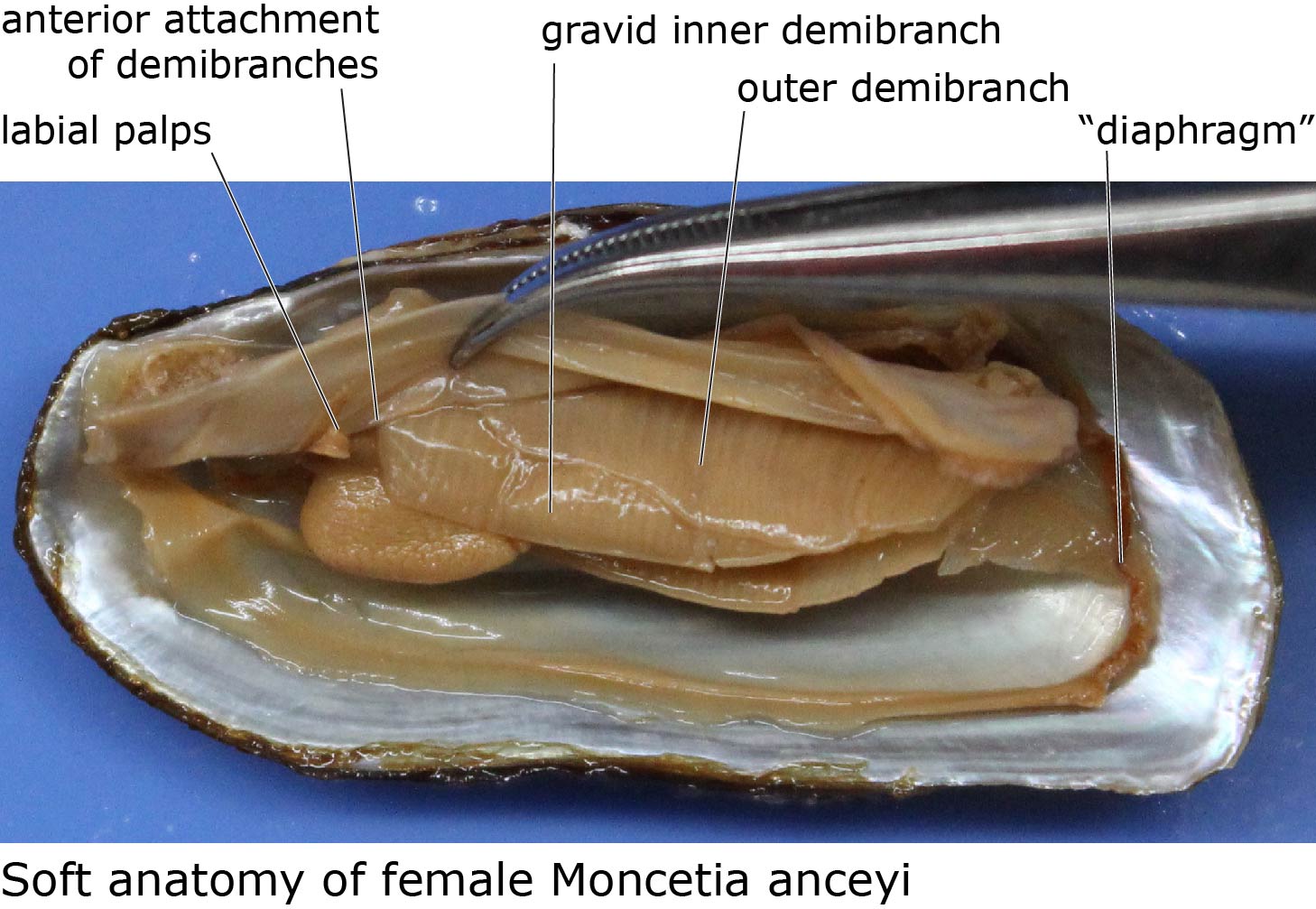This month’s MotM is dedicated to the American undecided voter because Moncetia anceyi is the undecided freshwater mussel. Is it an iridinid? Is it a unionid? We can’t decide.
Traditionally, Moncetia has been classified in the family Iridinidae. But, even that arrangement was fuzzy. Haas (1969) treated M. anceyi in the genus Mutela, while Mandahl-Barth (1988) placed it under Spathopsis (= Chambardia).* The iridescent nacre is reminiscent of Mutela, but the shell outline and periostracum are more like Chambardia. We followed Daget (1998) in treating Moncetia as a monotypic genus in the Iridinidae (Graf & Cummings, 2007).
However, there is a paper by Kondo (1984) where he determined the host fish of M. anceyi in Lake Tanganyika, and he illustrated a glochidium. A what?! A glochidium. How can M. anceyi be an iridinid in the superfamily Etherioidea — a clade of mussels with lasidium-type larvae — if it has glochidia? (Graf & Cummings, 2006). At this point in the story, one can conclude that 1) someone has made a mistake or 2) we don’t have as good of a handle on unionoid evolution as we think we do (or both).
Fortunately, Takaki Kondo retained specimens and was generous enough to send us some for examination (in 2003). Before we had them in hand, we assumed the specimens would actually belong to one of the known unionids from Lake Tanganyika (e.g., Pseudospatha). Nope. The specimens we have match the types of Moncetia anceyi (and other synonyms) that we have seen in various collections.
 But having the specimens has not improved our certainty. The largest female (19 mm) we have is shown in the figure to the right. In all our specimens, the posterior mantle (and adjacent adductor) was cut. It is difficult to make conclusions about whether there is mantle fusion at the diaphragm (like in iridinid) or a supra-anal aperture (like a unionid). We can see that this female is gravid, with the marsupium restricted to the inner demibranchs (iridinid), but there is a distinct gap between the anterior attachment of the demibranchs and the relatively small labial palps (unionid). But having the specimens has not improved our certainty. The largest female (19 mm) we have is shown in the figure to the right. In all our specimens, the posterior mantle (and adjacent adductor) was cut. It is difficult to make conclusions about whether there is mantle fusion at the diaphragm (like in iridinid) or a supra-anal aperture (like a unionid). We can see that this female is gravid, with the marsupium restricted to the inner demibranchs (iridinid), but there is a distinct gap between the anterior attachment of the demibranchs and the relatively small labial palps (unionid).
So, we are undecided about the taxonomic affinities of Moncetia anceyi because of its inconsistent anatomical positions. It’s a flip-flopper. Rather than classifying based on the lesser of two homoplasies, we are third-party punting for incertae sedis.
-----
* If we wanted to, we could report on the opinions of Modell (1964) and Starobogatov (1970), but most discussions of freshwater mussel taxonomy are confusing enough without their jive — even when they happen to be correct. |